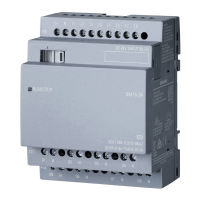
Do you have a question about the Siemens LOGO! and is the answer not in the manual?
| Brand | Siemens |
|---|---|
| Model | LOGO! |
| Category | Microcontrollers |
| Language | English |
Alerts users about risks associated with disconnecting connectors in potentially explosive atmospheres while the system is in RUN.
Highlights that LOGO! is designed for fixed and enclosed installation in housings or control cabinets.
Details safety measures for electronic control equipment, focusing on reliability and testing procedures.
Guides users on wiring LOGO! devices, including connecting power supply, inputs, outputs, and bus systems.
Describes the process of putting LOGO! into operation, including power-on reactions and expansion module checks.
Details the inputs and outputs of LOGO!, including digital, analog, and flag blocks, and their identification.
Outlines four essential rules for operating LOGO!, covering mode changes, program creation, cursor movement, and planning.
Guides users on creating and writing circuit programs to LOGO!, including selecting programming mode and editing.
Explains how to assign, change, and deactivate passwords to protect circuit programs from unauthorized access.
Defines constants and connectors (Co) representing inputs, outputs, flags, and voltage levels in LOGO!.
Lists and describes basic logical functions (AND, OR, NAND, etc.) used in LOGO! circuit programs.
Provides an overview of special functions (SFs) in LOGO!, including their input designations and parameter assignment.
Details various special functions available in LOGO!, covering timers, counters, analog operations, and more.
Explains the On-delay function, its symbol, wiring, description, and parameter T settings.
Describes the Up/down counter function, its inputs, parameters, and functional description.
Details the Analog threshold trigger, its parameters for thresholds and differential values, and output logic.
Explains the Analog comparator function, which sets/resets output based on difference and thresholds.
Describes the Analog amplifier function, which amplifies analog input values and outputs them.
Details the Analog Multiplexer function, which selects and displays one of four saved analog values on the output.
Explains the Analog Ramp function, which sets startup levels at the analog output and allows speed adjustment.
Describes the PI controller function, covering proportional and integral actions for automation.
Defines parameter assignment as configuring block parameters like timer delay times and thresholds.
Guides users on how to select parameter assignment mode from the RUN state.
Explains how parameters are identified by block number and shortname, providing examples like configurable time T.
Details how to change parameter values, including time parameters and timebases, in parameter assignment mode.
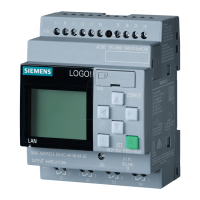


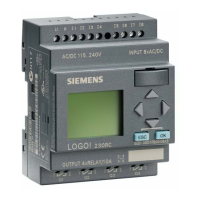
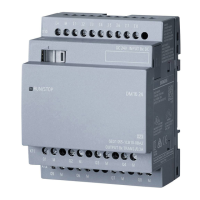





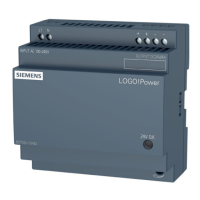
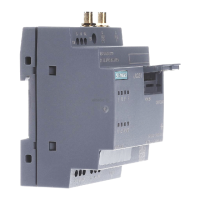
